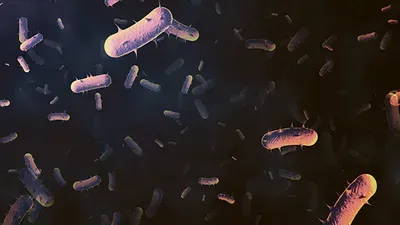
The need to sterilize lab equipment and utensils is growing. Although most common in healthcare, animal research, and medical treatment facilities, needs are increasing in a variety of lab settings. Frequently used and potentially hazardous sterilizing agents include formaldehyde, glutaraldehyde, and ethylene oxide. All have been in use for decades. More than 40 years ago, in 1977, the National Institute for Occupational Safety and Health (NIOSH) estimated 75,000 workers nationwide were potentially exposed, with more than 10,000 sterilizers in use.1 Ethylene oxide and formaldehyde are both classified as human carcinogens. Further, ethylene oxide is very explosive. The Safety Guys have written about both of these previously. Therefore, this article will focus more on glutaraldehyde as its use gains in need and acceptance.
Glutaraldehyde is used for sterilization in many medical, dental, and veterinary surgical facilities because it is efficient and performs at cool or room temperatures compared with autoclaving or steam sterilization. Glutaraldehyde- based chemical agents are used to disinfect medical equipment that cannot be subjected to extreme heat. Examples include lensed devices used in surgery, endoscopy, and respiratory therapy. Trade names of glutaraldehydebased products include, but are not limited to, Cidex, Sonacide, Sporicidin, Hospex, and Omnicide.
The average surgical or research facility most likely uses the small-countertop, self-contained sterilizing cabinets or tubs. All glutaraldehyde use should entail careful installation, rigorous maintenance, and employee protections.
Let’s begin with some definitions.2 Here are the definitions of the different terms used when discussing sterilization:
Sterilant: Physical or chemical agent(s) or process that completely eliminates or destroys all forms of life, particularly microorganisms.
Disinfectant: An agent that destroys pathogens by physical or chemical means. (Disinfection processes do not ensure the same margin of safety associated with sterilization processes and can vary in their extent of microorganism elimination.)
High-Level Disinfection: A process utilizing a sterilant under less than sterilizing conditions. The process kills all forms of microbial life except for large numbers of bacterial spores.
Typical disinfection activities can range from simple room-temperature soaking to fully automated processing of lensed instruments, such as endoscopes. Potential exposures are discussed below.
Hazard Recognition—Notable Properties
Glutaraldehyde, at room temperature, is a pungent, colorless, oily liquid. It is a strong irritant, and the most serious adverse health effect is occupational asthma. Usually used as an aqueous solution, if left uncontrolled, exposure to the vapors is possible. Health effects may be immediate or delayed, with latent periods of a few weeks to several years reported.
Download the Infographic: Autoclave Safety
Although the Occupational Safety and Health Administration (OSHA) does not have an occupational permissible exposure limit, NIOSH has established a recommended exposure limit of only 0.2 ppm for a regular eight-hour work shift. And the American Conference of Governmental Industrial Hygienists currently recommends a threshold limit value of 0.05 ppm as a ceiling (the highest allowed exposure at any time during the work shift).
Exposures to glutaraldehyde as a high-level disinfectant occur primarily during the following activities:
- Activating and pouring glutaraldehyde solution into or out of a cleaning container system (e.g., soaking basin in manual disinfecting operations and reservoir in automated processors).
- Opening the cleaning container system to immerse instruments to be disinfected
- Agitating glutaraldehyde solution
- Handling of soaked instruments
- Removing instruments from the container system
- Rinsing the channels of instruments containing residual glutaraldehyde solution
- Flushing out instrument parts with a syringe
- Drying instrument interiors with compressed air
- Disposing of “spent” glutaraldehyde solutions to the sanitary sewer
- Performing maintenance procedures, such as filter or hose changes on automated processors that have not been prerinsed with water.2
Hazard Evaluation—Are Exposures Present?
Occupational use of glutaraldehyde should involve performing initial monitoring in each area where it is used to accurately determine the airborne concentrations to which employees might be exposed. The most appropriate method is to conduct initial personal exposure monitoring on representative employees directly involved in handling and using glutaraldehyde.
Before conducting initial monitoring, it is good practice to check the room or area for proper ventilation and exhaust. For general ventilation, make sure the room is on dedicated single-pass air without recirculation. Ensure the area is balanced slightly negative to adjacent spaces. Check that the supply flow is adequate and volumes are as designed.
Also examine the disinfection/sterilizer equipment thoroughly. Is the sterilizer exhausted properly according to the manufacturer’s recommendations? Is the exhaust working? How are glutaraldehyde solutions handled? Are associated containers, hoses, and transfer vessels inspected and leak-checked regularly?
Lab Safety Management Certificate
The Lab Safety Management certificate is more than training—it’s a professional advantage.
Gain critical skills and IACET-approved CEUs that make a measurable difference.
After the equipment is checked and the facility ventilation is verified, ensure all employees using the system have proper training. Observe the technician’s performance of a complete disinfection/sterilization cycle. Pay special attention when equipment is unloaded. How are the sterilized materials handled? It is best to get all these things in order before spending money on expensive monitoring.
Hazard Control—Preventing Overexposure
First, we must use good engineering controls and comprehensive training and work practices to prevent potential exposures. Measure supply and exhaust flows and conduct a ventilation test and balance. Ensure equipment is properly installed and exhausted and that there are no leaks. Check for leaks from the sterilizing equipment and supply lines (if so equipped).
One task that we have observed that presents a good chance for uncontrolled release and exposures is during the drying of sterilized materials. With sampling, we have found significant vapor levels can remain after removal from the sterilizer. We would recommend transferring materials to a hood or other exhausted enclosure for a short period to allow vapor control during further handling.
Summing Up
Additional assistance is available from the EPA,3 NIOSH, and OSHA websites. The key to working with hazardous materials is first, recognize the hazards, second, follow up with evaluation of the potential exposures, and finally, design and implement proper controls. Where glutaraldehyde is used, we must ensure proper and sufficient facility supply and exhaust, safe material handling, and routine safety check procedures. Finally, conduct periodic monitoring of air concentrations for personnel and the engineering systems.
References
1. Special Occupational Hazard Review with Control Recommendations: Use of Ethylene Oxide as a Sterilant in Medical Facilities. National Institute of Occupational Safety and Health. Atlanta, GA. 1977. http://www.cdc.gov/niosh/nioshtic-2/00074545.html
2. Safe Use of Glutaraldehyde in Health Care. Occupational Safety and Health Administration. Washington, D.C. 2006. https://www.osha.gov/Publications/glutaraldehyde.pdf
3. Reducing Ethylene Oxide and Glutaraldehyde Use. Environmental Protection Agency, Washington, D.C. 2002. https://19january2017snapshot.epa.gov/www3/region9/waste/archive/p2/projects/hospital/glutareth.pdf












